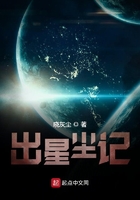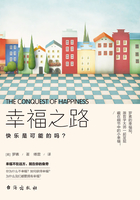usable in the philosophy of reality. With Hegel, "in itself" covers the original identity of the hidden, undeveloped contradictions within a thing, a process or an idea, and "for itself" contains the distinction and separation of these hidden elements and the starting-point of their conflict. We are therefore to think of the motionless primordial state as the unity of matter and mechanical force, and of the transition to movement as their separation and opposition. What we have gained by this is not any proof of the reality of that fantastic primordial state, but only the fact that it is possible to bring this state under the Hegelian category of "in itself", and its equally fantastic termination under the category of "for itself". Hegel help us!
Matter, Herr Dühring says, is the bearer of all reality;accordingly, there can be no mechanical force apart from matter. Mechanical force is furthermore a state of matter {See D. Ph. 73}. In the original state, when nothing happened, matter and its state, mechanical force, were one. Afterwards, when something began to happen, this state must apparently have become different from matter. So we are to let ourselves be dismissed with these mystical phrases and with the assurance that the self-equal state was neither static nor dynamic, neither in equilibrium nor in motion.
We still do not know where mechanical force was in that state, and how we are to get from absolute immobility to motion without an impulse from outside, that is, without God.
The materialists before Herr Dühring spoke of matter and motion. He reduces motion to mechanical force as its supposed basic form, and thereby makes it impossible for himself to understand the real connection between matter and motion, which moreover was also unclear to all former materialists. And yet it is ****** enough. Motion is the mode of existence of matter. Never anywhere has there been matter without motion, nor can there be. Motion in cosmic space, mechanical motion of smaller masses on the various celestial bodies, the vibration of molecules as heat or as electrical or magnetic currents, chemical disintegration and combination, organic life -- at each given moment each individual atom of matter in the world is in one or other of these forms of motion, or in several forms at once. All rest, all equilibrium, is only relative, only has meaning in relation to one or other definite form of motion. On the earth, for example, a body may be in mechanical equilibrium, may be mechanically at rest; but this in no way prevents it from participating in the motion of the earth and in that of the whole solar system, just as little as it prevents its most minute physical particles from carrying out the vibrations determined by its temperature, or its atoms from passing through a chemical process.
Matter without motion is just as inconceivable as motion without matter.
Motion is therefore as uncreatable and indestructible as matter itself;as the older philosophy (Descartes) expressed it, the quantity of motion existing in the world is always the same. Motion therefore cannot be created;it can only be transferred. When motion is transferred from one body to another, it may be regarded, in so far as it transfers itself, is active, as the- cause of motion, in so far as the latter is transferred, is passive.
We call this active motion force , and the passive, the manifestation of force. Hence it is as clear as daylight that a force is as great as its manifestation, because in fact the same motion takes place in both.
A motionless state of matter is therefore one of the most empty and nonsensical of ideas -- a "delirious fantasy" of the purest water.
In order to arrive at such an idea it is necessary to conceive the relative mechanical equilibrium, a state in which a body on the earth may be, as absolute rest, and then to extend this equilibrium over the whole universe.
This is certainly made easier if universal motion is reduced to purely mechanical force. And the restriction of motion to purely mechanical force has the further advantage that a force can be conceived as at rest, as tied up, and therefore for the moment inoperative. For if, as is very often the case, the transfer of a motion is a somewhat complex process containing a number of intermediate links, it is possible to postpone the actual transmission to any moment desired by omitting the last link in the chain. This is the case, for instance, if a man loads a gun and postpones the moment when, by the pulling of the trigger, the discharge, the transfer of the motion set free by the combustion of the powder, takes place. It is therefore possible to imagine that during its motionless, self-equal state, matter was loaded with force, and this, if anything at all, seems to be what Herr Dühring understands by the unity of matter and mechanical force. This conception is nonsensical, because it transfers to the entire universe a state as absolute, which by its nature is relative and therefore can only affect a part of matter at any one time. Even if we overlook this point, the difficulty still remains: first, how did the world come to be loaded, since nowadays guns do not load themselves; and second, whose finger was it then that pulled the trigger? We may turn and twist as much as we like, but under Herr Dühring's guidance we always come back again to -- the finger of God.















